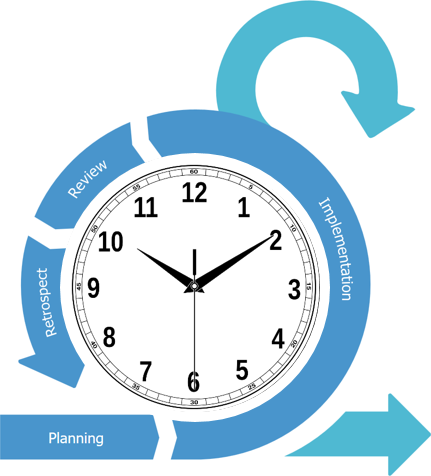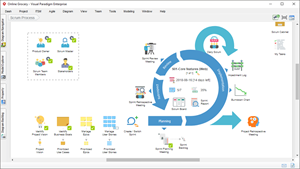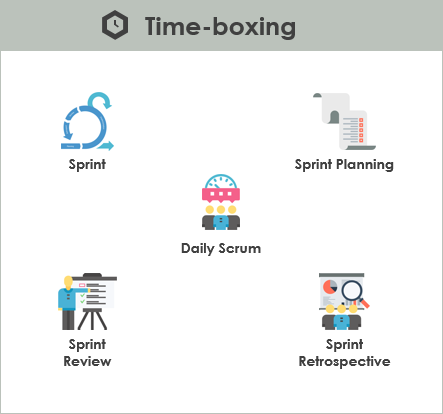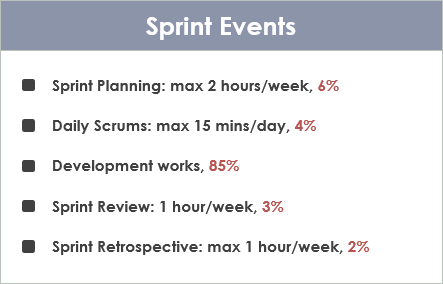The Timeboxing method is the best way to increase productivity and split projects into fixed periods. This time management technique offers the opportunity to limit the amount of time one wants to spend on a certain activity in advance.
Under the Scrum framework, all activities are time boxed, also known as “timeboxing” or timeboxed, is to give a “fixed length” time segment to a specific event or activity. That unit of time is called a time box. The goal of timeboxing is to define and limit the amount of time dedicated to an activity. Scrum uses timeboxing for all of the Scrum events and as a tool for concretely defining open-ended or ambiguous tasks.


Best Scrum Software Every Project Needs
A powerful scrum software that supports scrum project management. It features scrum tools like user story map, product backlog management, sprint backlog management, task management, daily scrum meeting, sprint planning tool, sprint review tool, sprint retrospective tool, burndown, impediment, stakeholder and team management.
In Scrum, timeboxing is a critical component of all five events. Some Scrum teams also use timeboxing during a Sprint to concretely define open-ended tasks. An example of an open-ended task might be conducting research that is necessary for the team to reach a decision or to estimate the size and complexity of an upcoming story.

The Following is a “time box” of the 5 events corresponding to a 1-week Sprint in Scrum
The Figure below shows the conversion of the timebox events to the percentage in Scrum:

Timeboxing is a common feature of many project management methodologies because timeboxing keeps teams focused on accomplishing the task at hand by providing a clear definition of done.
The goal of timeboxing is to define and limit the amount of time allotted for a specific activity. Timeboxing is the cure for preventing exceeding time limits. Scrum exclusively works with sprints; these are time boxes of one month or less, in which the scrum team delivers sprint goals. Scrum uses Timeboxing as a tool to concretely define open or ambiguous tasks.
| About Visual Paradigm |
 Visual Paradigm help organizations stay competitive and responsive to change faster and better in today’s fast changing environment. Our award-winning products are trusted by over 320,000 users in companies ranging from small business, consultants, to blue chip organizations, universities and government units across the globe. It enables organizations to improve business and IT agility and foster innovation through popular open standards and process frameworks.Visual Paradigm, a killer Agile feature in 2018, introduced Scrum Process Canvas for automating the way a Scrum team to create, manage and deploy software application that empowers the team to continuously improve their performance at unprecedented speed and scale. Visual Paradigm help organizations stay competitive and responsive to change faster and better in today’s fast changing environment. Our award-winning products are trusted by over 320,000 users in companies ranging from small business, consultants, to blue chip organizations, universities and government units across the globe. It enables organizations to improve business and IT agility and foster innovation through popular open standards and process frameworks.Visual Paradigm, a killer Agile feature in 2018, introduced Scrum Process Canvas for automating the way a Scrum team to create, manage and deploy software application that empowers the team to continuously improve their performance at unprecedented speed and scale.
Manage the Entire Scrum Process in One Page
|